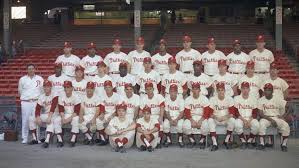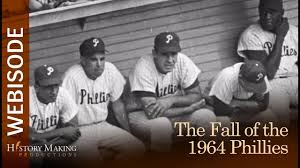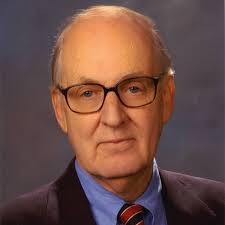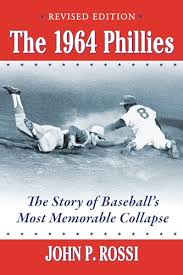John Rossi, The 1964 Phillies: The Story of Baseball’s Most Memorable Collapse (2005). Rev. ed. (2024).
Good Reads meta-data is 192 pages, rated 3.0 by 1 litizen.
Genre: History: Species: Baseball.
DNA: Philly.
Verdict: [Here I go again.]
Tagline: They were all out!

In 1964 an unprepossessing Philadelphia Phillies baseball team led the National League for 74 consecutive days in the home stretch, World Series tickets were printed, and…the Cinderella Cardinals from St Louis won it all. Huh? That result set two records. For the Phillies: it was longest lead that late in the season to dissipate, and for the Cardinals: the largest deficit overcome in the shortest time.
The Phillies lost ten straight games in the last fortnight of the season and sank from view. It all started with Chico Ruiz, who stole home, when he shouldn’t have. Tsk, tsk, tsk. (I have decried this event in other posts and will not add further salt to that old wound.)
Much ‘If only’ second guessing, inevitably, fills the pages about rosters, pitch calls by the catcher, pinch hitters, pitching rotation, use of the windup rather than the stretch, line up cards, batting order, even leads from first base, each and all in an effort to solve the mystery of the debacle.
But, at the end, as the author admits, there was no mystery. Or rather the mystery is how an average team like the Phillies, played well enough to lead the balanced Dodgers, the big bats of the Giants, and the laser pitchers of St Louis for so long.
In 1964 only two Phillies made the National League All Star team for the only time in their careers. The one Hall of Fame player on the roster, pitcher Jim Bunning, had started slowly, and was not an All Star that year, but later he carried the team much of the way. (Stock broker by winter, in the season Bunning always wanted the ball. Two days between starts was fine with him.) Further evidence for the mediocrity of the team is that in the following years it sank still further and still faster, as did most of the members of the 1964 roster who disappeared from view.
The success in 1964 was a compound of good luck, good management, and some grit. Though of course in unfailing hindsight the manager — Gene Mauch — was blamed for the defeat, rather than congratulated for the successes of his tactics of ‘little ball.’
‘Little ball?’ asked the fraternity brothers, who have forgotten everything and learned nothing. It means advancing the runner and playing for one run at a time, and relying on defence and pitching to keep the game close. Ergo it involves hit-and-run, hitting behind the runner, bunting for hits, squeeze bunts, tag ups for sacrifice flies, advancing on fielder’s choices, double steals, going deep into pitch counts, and delayed double steals, playing the infield in, pitch outs, double cutoffs, and so on. It also places a premium on defence in the middle of the diamond with a sound double-play combination, a strong-armed centre fielder, and a smart catcher who can block the plate. The final piece of the puzzle is a bullpen of strike-throwing relief pitchers.

Manager Mauch also played ‘money ball’ avant le mot by platooning in several positions, notably left field and first base, to give hitters an advantage.
As the day-by-day, game-by-game report in this book shows the Phillies ran out starting pitchers in August. Instead of five, as the coach’s manual says, they had two. The others had one problem or another. Things were so desperate that the starting pitcher in one crucial game during the slide was an 18-year old called from the minors getting in his first major league game. A promising left-hander had a shoulder injury in June that made every pitch painful. The two other right-handers in the pre-season planning each became unreliable. One had lost confidence in himself (later compounded by the Ruiz incident): he overthought everything and simply did not want the ball in baseball speak. The other, much less experienced pitcher, seemed resigned to losses before he threw the first pitch and the manager lost confidence in him.

While Rossi refers to the crowds attending games, and quotes often from the press, there is little about the social impact more generally on the city. It was a year of turbulence and, I have seen it asserted elsewhere, that the Phillies’ successes had a positive influence on the communities of the city by giving disconnected people something in common that transcended their own grievances and adversities.

